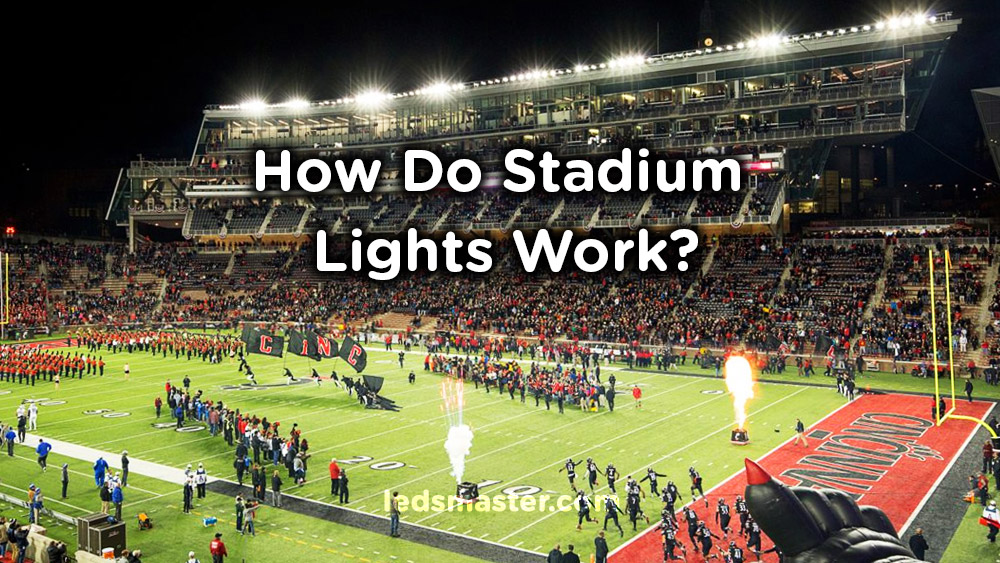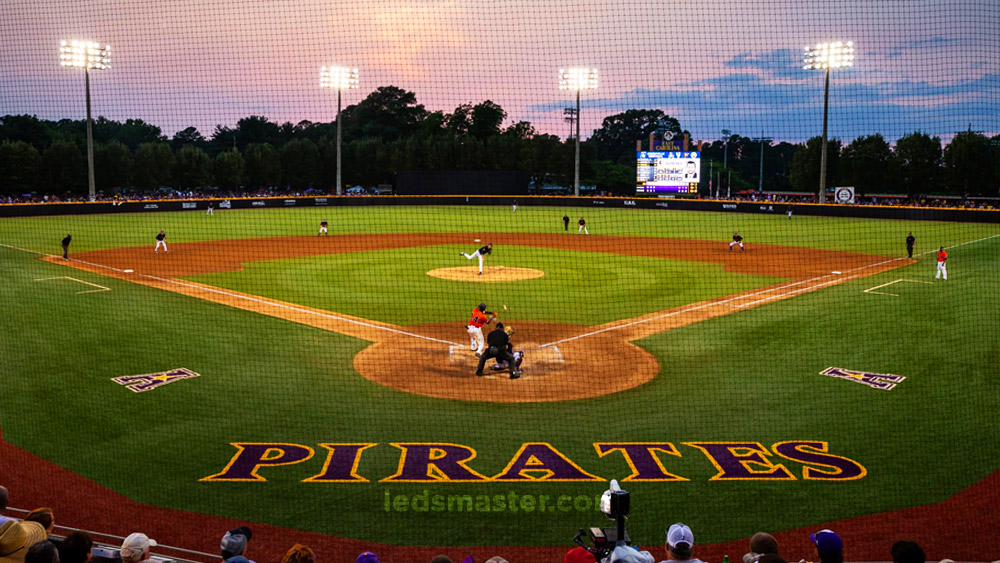How Do Stadium Lights Work?

As a buyer of stadium lighting, we may wonder how stadium lights work, such as its working principle and how to choose the best stadium lights. In this article, we will take a brief look at what stadium lights are and the terms associated with them, such as beam angle.
How does stadium light work?
Floodlights and spotlights are the main light sources used in stadiums. It is the lighting equipment that produces direct, intense illumination of large sports fields and spectator stands. Stadium lights work by directing a strong beam of light onto a specific sports area, such as a football field, soccer field, baseball stadium or cricket pitch. It should be noted that we need to carefully control the amount of lighting in the stadium, because if the light is too bright, it may have a dizzying effect on the athletes.
The main principle at work is that we use enough lumens of stadium lighting and the correct beam angle to illuminate the stadium. Floodlights provide a wide range of illumination, while spotlights are primarily used to highlight key region because they have a smaller beam angle, so we can easily create a concentrated spot in a smaller area.
Stadium floodlights and spotlights are powerful lighting fixtures mounted on tall light poles. Their beam angles range from 10 degrees to 90 degrees. Depending on the size of the stadium, the height and layout of the poles, we will use different combinations of beam angles and power to illuminate the stadium. The smaller the beam angle, the more concentrated the beam, so the farther these lights can shine.
Glare reduction in stadium lighting

Glare reduction is an important aspect of stadium lighting. If we use poor optics on stadium lighting, it will not control the beam effectively, thus creating strong glare that affects the performance of athletes, and the quality of life of people living near the stadium. People near the stadium may complain about light leakage from the stadium lighting.
To solve this problem, LedsMaster’s LED stadium lights are equipped with a patented secondary optical design, an advanced technology that controls and focuses the light beam on a designated area. In addition to suppressing up to 80% of glare, we can reduce light loss as the light travels through the stadium. The stadium lights work by precisely controlling the beam angle and aiming point to achieve optimal illumination and light uniformity.
HID vs. LED stadium lights
Traditionally, high intensity discharge or HID lamps are the main type of stadium lights. In fact, the wattage of stadium lights is much higher than other outdoor floodlights because the lux levels required in stadiums are much higher, so we need more lumens to illuminate the football field. This will significantly increase the cost of running the stadium lighting. Although HID, mercury vapor or metal halide lamps are readily available, HID lamps are not as energy efficient and not as convenient to use. Because we need more than 100,000 watts to light a stadium, and we need to wait 10 to 20 minutes to reach full brightness. That’s why we need to use LED lights in stadiums.